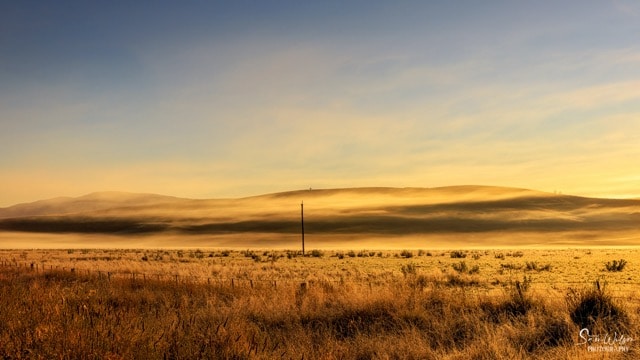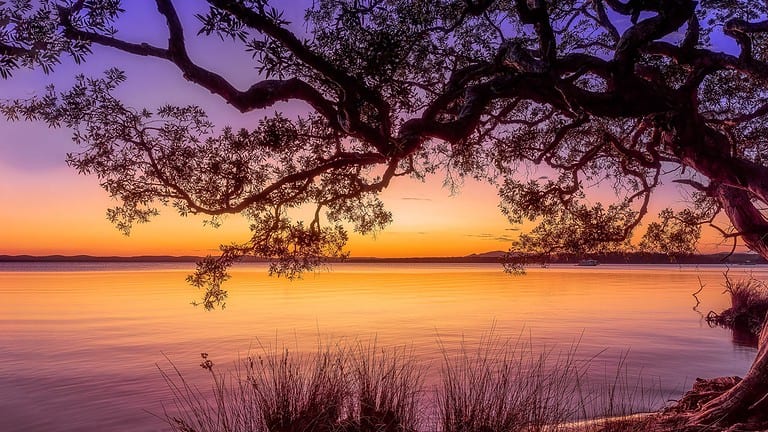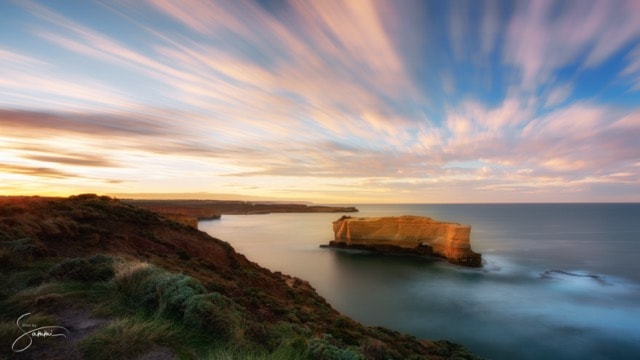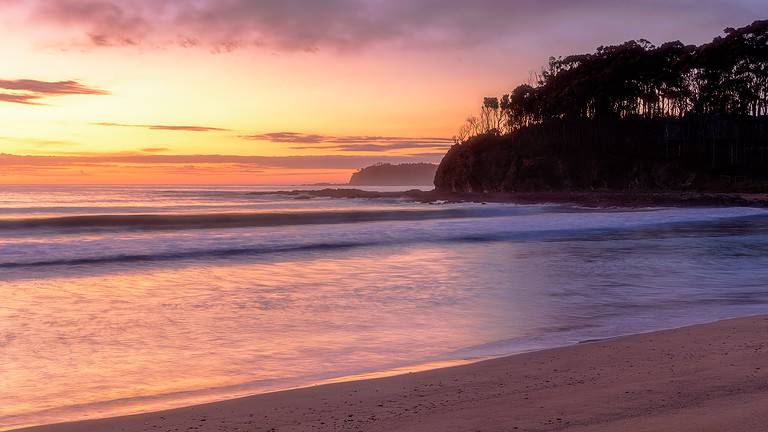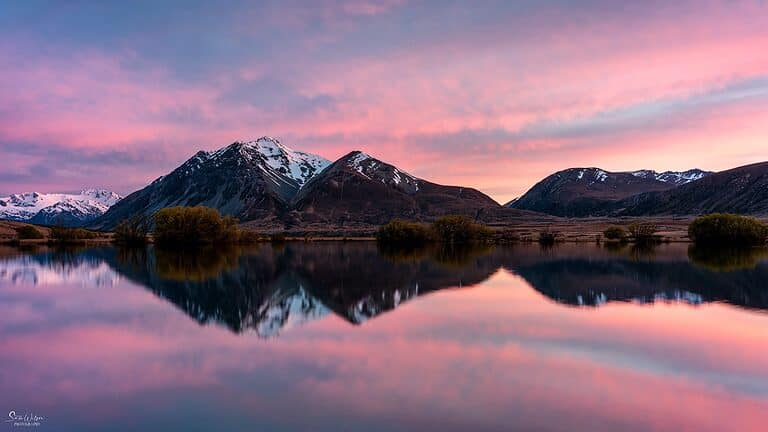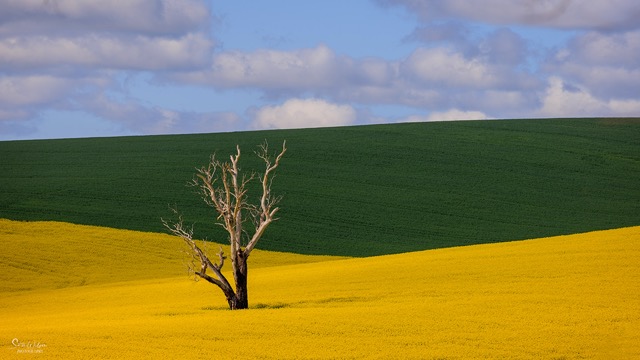7 Tips to Plan the Perfect Photography Trip
When you’re trying to plan the perfect photography trip, It can be really exciting, but also a bit overwhelming, especially if you haven’t done it before. That’s where this article comes in.
I’ve planned many photography trips over the years, and I’m sharing the exact process I use.
This article will walk you through everything you need to know to plan an epic landscape photography adventure. We’ll cover all the essentials, from picking your destination and packing your gear to scouting the perfect locations and capturing stunning shots.
So, if you’re itching to explore some new locations and capture some amazing photos, keep reading! We’ve got all the tips you need to plan the ultimate photography trip.
This article will give you all the essential tips and tricks you need to plan a successful landscape photography trip, from choosing your destination and packing your gear to scouting locations and taking stunning shots.
So, let’s get started! Whether you’re planning a solo adventure or a group trip with friends, these tips will help you plan the photography trip of your dreams.
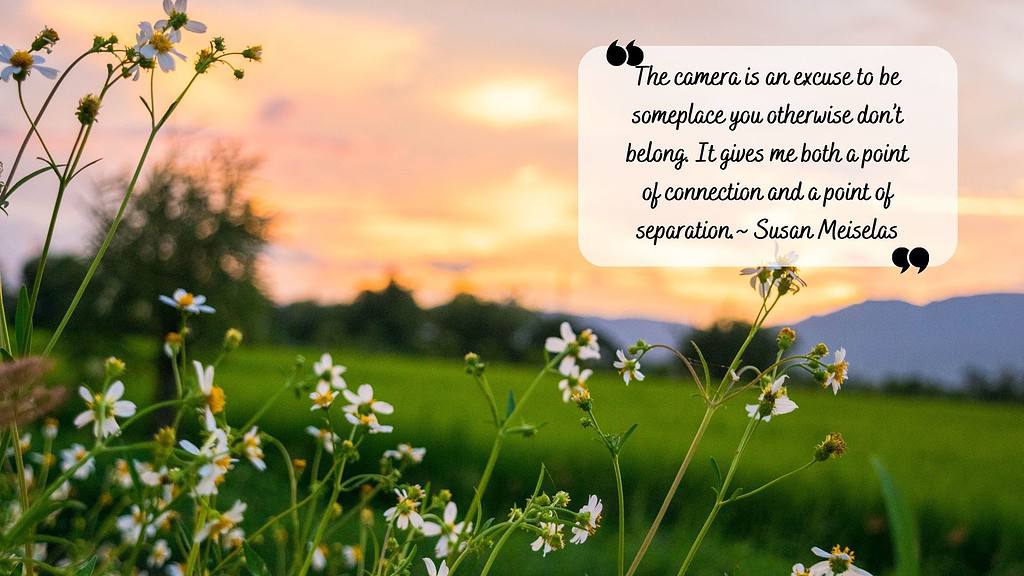
1 – Set your goals
Before you start planning your landscape photography trip, it’s important to think about what you want to achieve with your pictures. Setting clear goals will help you plan the rest of your trip more effectively and increase your chances of capturing the kind of images you want.
When you’re new to landscape photography, it can be easy to feel overwhelmed and unsure of where to start. That’s why setting goals can be helpful in guiding your creative process and keeping you on track.
To set goals for your trip, start by considering what kind of landscapes you want to photograph and what kind of story you want your pictures to tell. This will help you narrow down your destination and plan your itinerary.
For instance, if you aim to capture a specific type of image, like a landscape at a specific time of day or in particular weather conditions, you might need to plan your trip around those factors. Alternatively, if you want to showcase a particular subject or theme, such as waterfalls or autumn foliage, you might need to research the best locations to visit during the right season.
Painted silos are one of my favourite things to try and find on my photography trips – so I always research these as part of my planning.
By setting goals, you’ll have a clearer idea of what you want to accomplish with your photography and can plan your trip accordingly. This will help you take better pictures and have more fun, making your journey as a landscape photographer an enjoyable and fulfilling experience
2 – Research your destination
Researching and choosing your destination is a crucial step in planning your landscape photography trip. It can help you identify the best places to go, the best times to visit, and the best angles to capture your shots from. Here are some tips to get you started:
1 – Use online tools: Google Maps and Google Earth are excellent tools for researching locations. You can use Google Maps to identify the main attractions in the area and plan your route. Google Earth can give you a 3D view of the landscape and help you get an idea of what the place looks like. Both tools are free and easy to use.
2 – Check social media: Instagram and Flickr are great platforms to see what other photographers have captured in the area. Search for hashtags related to your destination and see what kind of shots people are taking. This can give you an idea of popular spots and inspire you to find your unique angle.
3 – Join local photography groups: Facebook and Meetup have photography groups that are location-specific. Joining these groups can help you connect with local photographers, who can provide valuable insights into the best locations to visit, the best time to go, and the best spots to capture your shots from.
By doing your research before your trip, you can maximise your time and effort, and increase your chances of capturing stunning landscape shots. Remember, the more you know about your destination, the better equipped you’ll be to create compelling and unique images.
3 – Choose when to go
Choosing the right time to visit a location is an essential step in planning a landscape photography trip. The time of year and the time of day can have a significant impact on the lighting and overall feel of your photos.
To choose the best time to go on your photography trip, think about the type of landscape you want to capture.
If you’re interested in photographing trees in a forest or bushland, for instance, you may want to plan your trip during autumn when the leaves change colour.
Or, if you want to capture a coastal scene, you may want to plan your trip for sunrise or sunset, when the light is warmer and softer, giving your photos a magical glow.
It’s also important to research the location and find out when the peak season is, as this can impact the availability of accommodation and the potential crowds. Choosing to visit during the off-season can offer a more peaceful experience and unique photo opportunities.
By choosing the right time to go, you’ll increase your chances of capturing stunning photos and create a memorable experience on your landscape photography trip.

4 – Create a shot list
Before you go on a photography trip, it’s a great idea to make a list of all the photos you want to take. This is called a shot list and it helps you remember all the photos you want to take while you’re on your trip.
First, think about what types of photos you want to take. Do you want to take pictures of landscapes, animals, or people? You can also do some research to find popular places for taking photos in the location you’re visiting.
Once you have some ideas, write them down on a list. You can organise your list by location or by the type of photo you want to take. Don’t forget to include any specific details like the best time of day or lighting conditions for each shot.
Here are some tips for organising your shot list:
- Use a note-taking app on your phone to keep your shot list handy and easy to access.
- Create a spreadsheet on your computer or mobile device and keep track of the shots you want to take, including details like location, time of day, and lighting.
- Use a photography planning app to create your shot list and even track your progress.
- If you prefer to write things down on paper, use a notebook or planner to create your shot list.
Having a shot list can be really helpful during your trip, as it will keep you focused and ensure you don’t miss any important shots or locations.
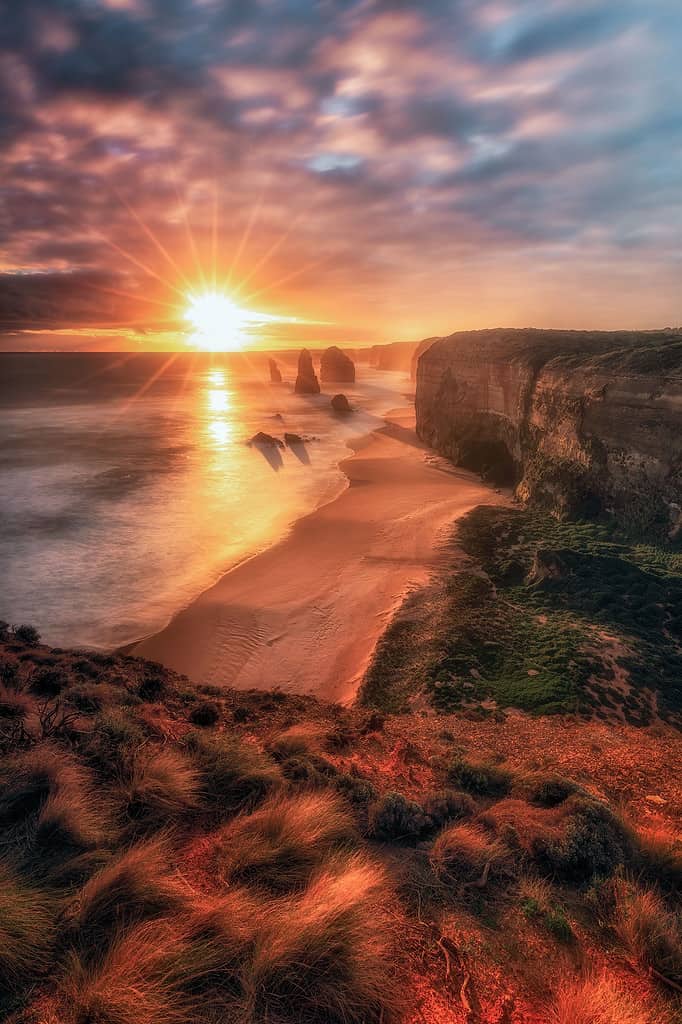
After creating your shot list, you might find that you don’t have enough time to capture everything on your list. Don’t worry! Your shot list can help you prioritise which photos you should take first.
5 – Pack The Right Gear
When you’re planning your photography trip, it’s essential to make sure you have all the right gear. This includes your camera, lenses, and tripod, as well as any other accessories you might need, such as a lens hood or a remote shutter release.
To avoid any mishaps on your trip, it’s important to protect your gear from the elements. If you’ll be shooting in wet or dusty conditions, consider using weather-resistant cases or lens filters to keep your equipment safe and prevent damage.
By packing the right gear and taking the necessary precautions, you’ll be ready to capture stunning photos on your photography adventure.
And if you’re interested in learning more about essential landscape photography gear, be sure to check out our in-depth article by clicking the link below.

6 – Check the weather
When you’re planning a photography trip, it’s important to think about the weather conditions in the area you’re visiting. Doing a bit of research ahead of time can help you prepare for any challenges and ensure that you have the right gear for your trip.
For example, if you’re heading to a place with a lot of rain, like a rainforest or coastal region, you’ll want to bring a rain cover for your camera to protect it from water damage. And don’t forget one for you too!
On the other hand, if you’re visiting a place with lots of sun, like a desert or beach, you may need to bring a lens hood or filter to avoid overexposure in your shots.
Another thing to consider is the time of year that you’ll be visiting. If you’re hoping to capture beautiful autumn foliage, you’ll want to plan your trip for when the leaves are at their peak. Or, if you’re dreaming of photographing snowy landscapes, you’ll want to make sure you’re visiting during the winter months.
It’s also a good idea to research the times for sunrise and sunset, as well as the position of the sun. This can help you plan your shots for the best possible light. And don’t forget to check if any roads or areas will be closed during your planned visit, as this can affect your ability to get to certain locations.
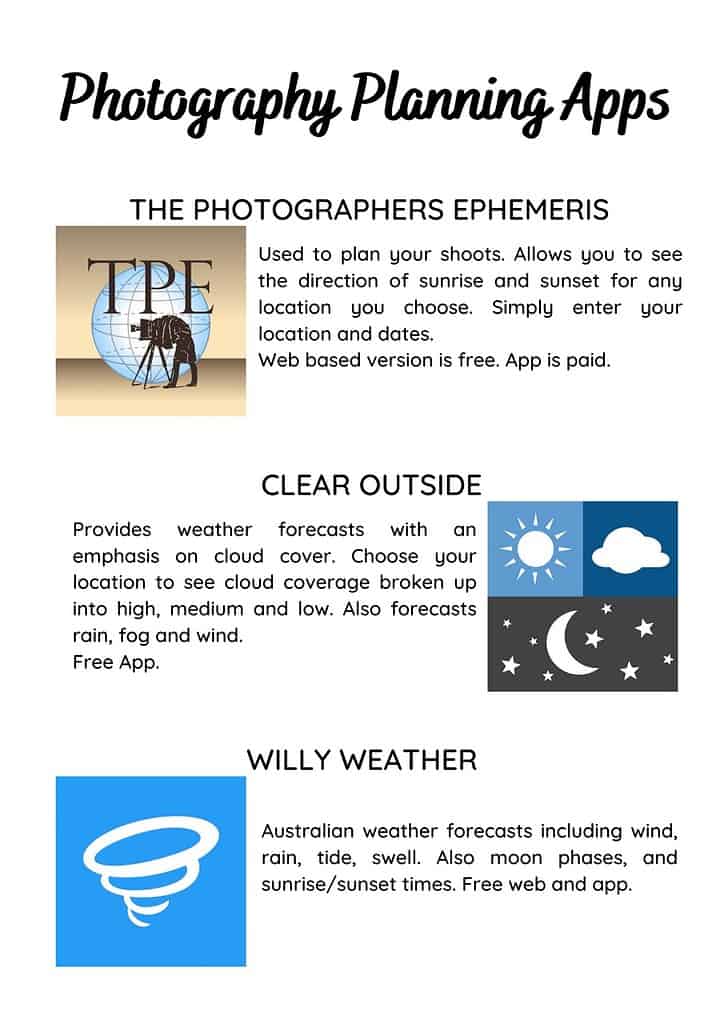
By considering the weather and climate of the area you’ll be visiting, as well as the timing of your trip, you can plan ahead and be prepared for any conditions that may arise.
And remember, it’s always better to have the right gear and not need it, than to need it and not have it!
7 – Plan your itinerary
Now that you have a list of locations you want to photograph, it’s time to plan your itinerary. This step is crucial to making the most of your time and capturing great shots.
Start by deciding how many days you have for your trip and allocate a certain amount of time to each location. Remember to factor in travel time between locations and any other activities you may have planned.
It’s also a good idea to research the best times of day to visit each location. This could mean catching the sunrise or sunset, or even visiting during a certain time of year when the lighting is just right.
When creating your itinerary, don’t forget to be flexible. While it’s good to have a plan, sometimes unexpected things can happen. Be open to new opportunities and spontaneous detours that may lead to some amazing shots.
Once you have your itinerary, share it with someone else who can give you feedback and make suggestions. This can help ensure that you haven’t overlooked anything and can provide you with fresh ideas.
With a well-planned itinerary, you’ll be able to make the most of your photography trip and come away with some stunning photos to cherish.
Bonus Tip – Be Flexible
No matter how well you plan, unexpected situations can happen during your photography trip. It’s important to stay flexible and open to new experiences. In fact, being flexible can often lead to some of the most memorable and creative shots.
For example, if the weather suddenly changes, don’t let it ruin your plans. Instead, embrace the opportunity to capture unique shots that you may not have considered before. This might mean experimenting with different angles, lighting, and perspectives.
Similarly, if you arrive at a location and find it overcrowded or closed, don’t be discouraged. Look for alternative spots nearby or try visiting at a different time of day. And if you’re feeling overwhelmed or burnt out, don’t hesitate to take a break and recharge. Sometimes, a short break can do wonders for your creativity and motivation.
Being flexible also means being willing to adjust your itinerary if necessary. Maybe you come across a beautiful landscape on the way to your planned location, or a local tells you about a hidden gem worth checking out. Don’t be afraid to veer off course and explore. You never know what kind of inspiration you might find.
By staying flexible and open-minded, you can make the most of your photography trip and come away with some truly unforgettable photos.
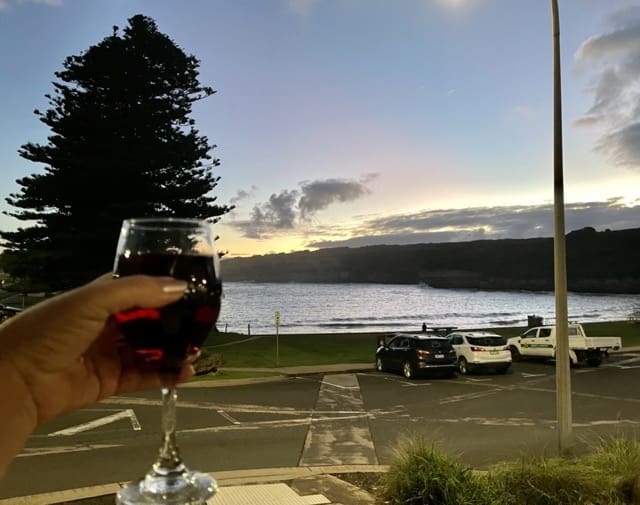
Conclusion
I hope you found these tips on planning the perfect photography trip useful and inspiring!
The more you plan, the more you will relax and enjoy your trip. A successful photography trip is the result of great planning.
Remember to choose a destination that speaks to you, pack wisely, research and scout out locations, and create a flexible itinerary that allows for downtime and unexpected opportunities.
With a little planning and preparation, you can capture stunning images and create unforgettable memories that will last a lifetime.
Now, it’s your turn to take action and plan your own photography trip.
Now it’s your turn – I’d love to hear your photography trip planning tips! Share them in the comments below and let me know which destination you’re planning to visit next.
That’s it for now – Keep clicking and stay caffeinated
Like this post? PIN it so you can save it for later
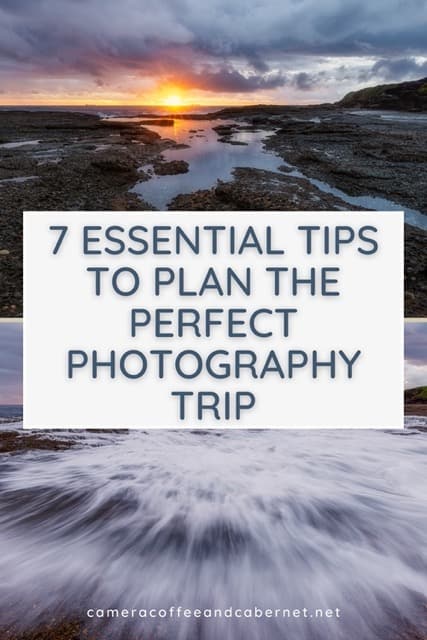
Other Posts You Might Like:
- Travel Photography Tips: 40+ Essential Tips For Great Photos
- Packing for A Photography Road Trip
- Planning Solo Road Trip
- On The Road – Travel Photography Tips
- Travel Photography – Get Great Landscape Photos When Travelling
- Timing Your Landscape Photography
- How To Photograph Autumn Colors: 7 Simple Beginner Tips
Photography Road Trip Inspiration
- Great Ocean Road Photo Locations
- NSW South Coast Photography Locations
- Snowy Mountains Photography Road Trip
- Blue Mountains Photography Itinerary
- Packing For Your Next Photography Trip: How To Decide What To Take
Don’t miss a post – sign up Here if you haven’t already
Note – Unless otherwise stated, all photos are mine and remain my copyright images – Sam Wilson Photography.








